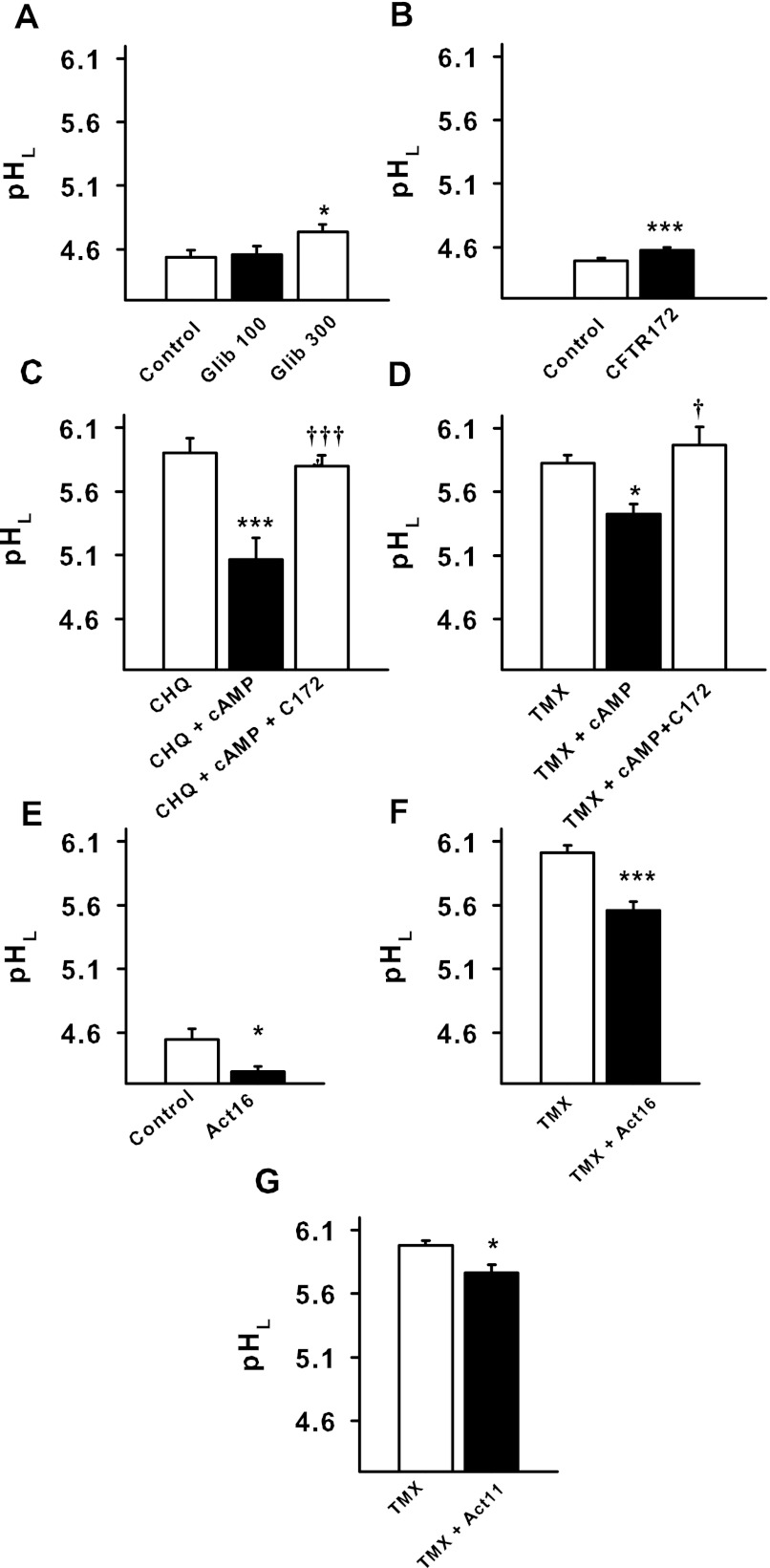Fig. 2.
Pharmacological modulation of CFTR alters lysosomal pH. A: glibenclamide (Glib) increased the baseline pH of lysosomes in RPE cells (*P < 0.05 vs. control; n = 28 control, n = 21 100 μM Glib, n = 21 300 μM Glib). B: selective CFTR inhibitor CFTRinh-172 (CFTR172, 10 μm) significantly increased baseline pH of lysosomes in the cultured cells (n = 40). ***P < 0.005 vs. control. C: the cell-permeant cAMP analog cpt-cAMP (cAMP, 500 μM) acidified cells exposed to chloroquine (10 μM), while CFTRinh-172 (C172, 10 μm) reduced the reacidification. ***P < 0.001 vs. chloroquine, †††P < 0.001 vs. chloroquine + cpt-cAMP, n = 10. D: likewise, cpt-cAMP (500 μM) acidified cells exposed to tamoxifen (30 μM), but CFTRinh-172 (10 μm) inhibited the reacidification effect of the cpt-cAMP. *P < 0.05 vs. tamoxifen, †P < 0.05 vs. tamoxifen + cpt-cAMP; n = 33. E: CFTRAct16 (Act16, 10 μm) lowered baseline lysosomal pH in ARPE-19 cells (n = 12). *P < 0.05 vs. control. F: CFTRAct16 (10 μm) lowered lysosomal pH in tamoxifen (30 μm)-treated ARPE-19 cells (n = 32). ***P < 0.001 vs. tamoxifen. G: the more selective CFTR activator CFTRAct11 (Act11, 30 μm) also lowered lysosomal pH in tamoxifen (30 μm)-treated ARPE-19 cells (n = 28). *P < 0.05 vs. tamoxifen.

